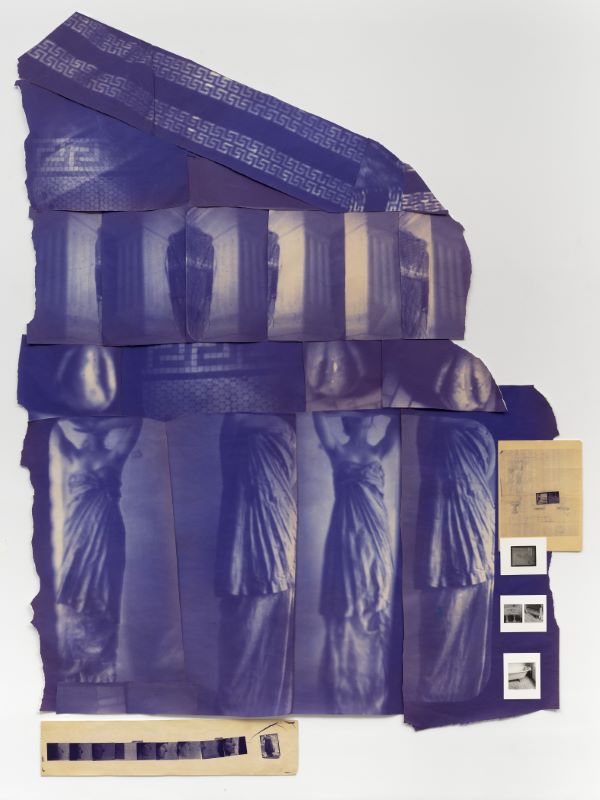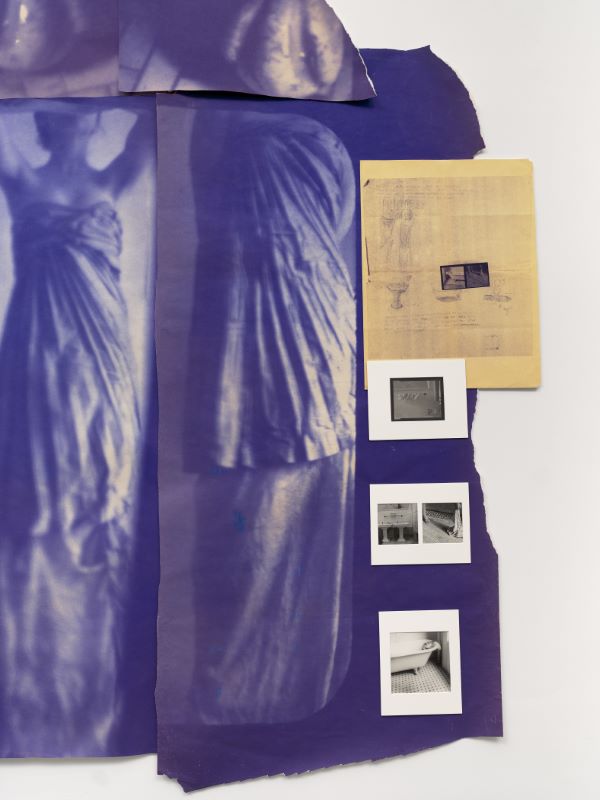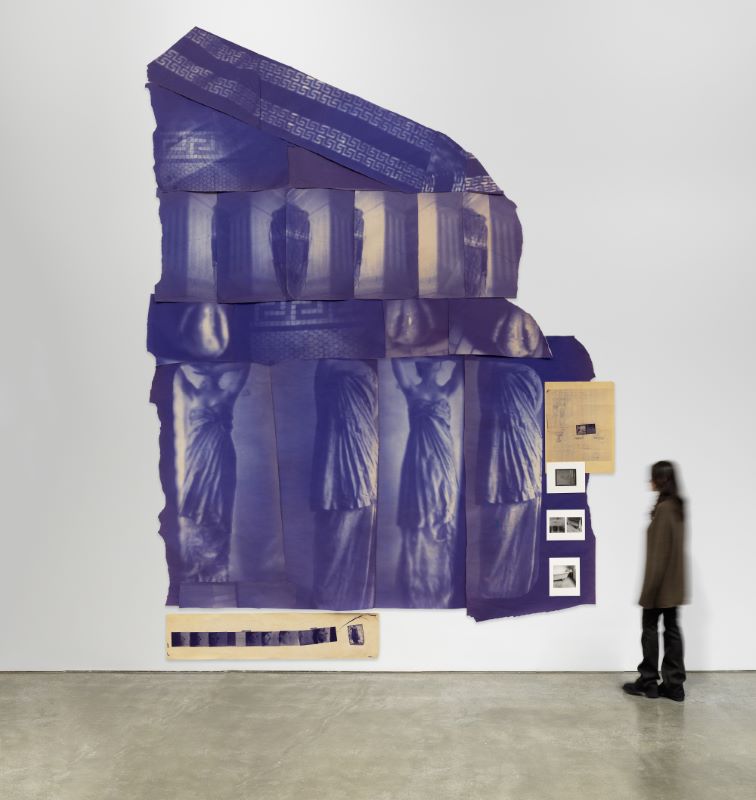"Blueprint for a Temple (II)": Francesca Woodman. "Francesca Woodman," Gagosian, New York

Gagosian Gallery
555 West 24th Street, New York
through April 27
Blueprint for a Temple (II), one of the largest and most ambitious of Francesca Woodman’s works, is on view for the first time in 44 years at Gagosian Gallery. Originally shown in the exhibition "Beyond Photography 80" at the Alternative Museum in New York, this monumental collage, assembled from diazotypes and gelatin silver prints, is one of two temples Woodman constructed in 1980; its counterpart, Blueprint for a Temple (I), is in the collection of the Metropolitan Museum of Art, New York.
Woodman’s temples—made with the same material used by architects to create blueprints—were inspired by the Caryatid Porch of the Erechtheion on the Acropolis in Athens, but featured her friends posed as draped classical figures, holding up a classical entablature and pediment pieced together from fragmented images of bathroom fixtures and tiles around New York City.
Of the project, Woodman wrote on a small print that accompanies the larger structure: “Bathrooms with classical inspiration are often found in the most squalid and chaotic parts of the city. They offer a note of calm and peacefulness like their temple counterparts offered to wayfarers in Ancient Greece.
”She further described her plans for the piece’s installation in a letter, explaining: “I will also exhibit . . . the photos of the bathrooms that the fragments come from and portraits of the people who own the bathrooms.” She included these images on the lower left and right of the temple.
A culmination of Woodman’s exploration of the body as sculpture, Blueprint for a Temple (II) prompts a reconsideration of Woodman’s earlier photographs of the figure in space and its relationship to architecture.




